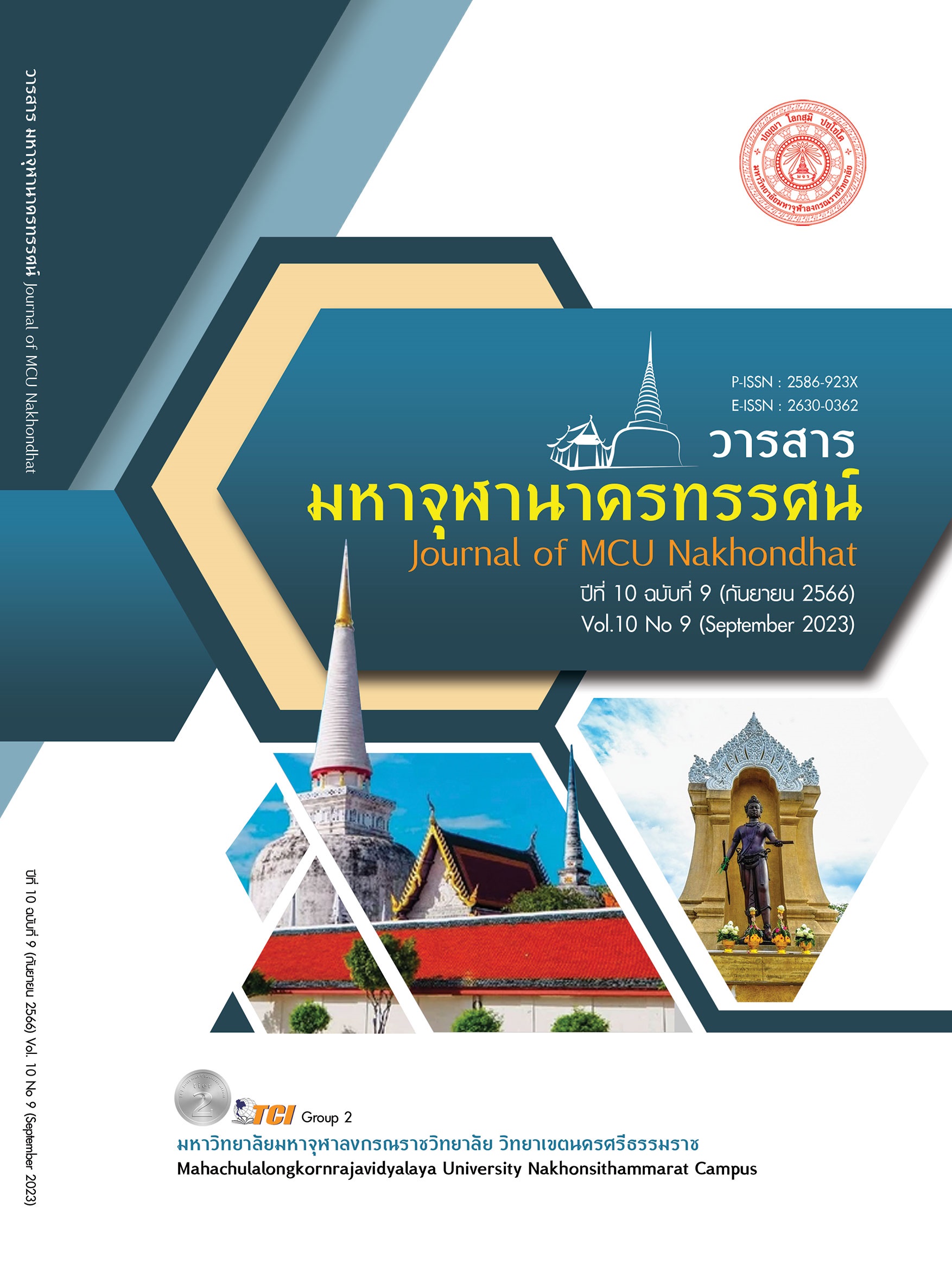THE TRUE SELVES OF THE SĀṄKHYA TRADITIONS
Main Article Content
Abstract
This academic article has two main objectives to: 1) study the concept of the traditional true ego of the Garbage Sect in terms of its meaning and origin; and the concept of the same subject of Brahmin 2) present an analysis that under the dualism of Sāṅkhya school If you understand the deep meaning It can be used as a tool or a path leading to enlightenment and liberation, through inherent wisdom that consists of the awareness of oneʼs own true nature and the nature of things and beings in the world. Early Sāṅkhya conceive that the inherent and eternally unchanging wisdom abiding in the true self does not mean that all beings are already liberated. This true nature has to be attained personally by the liberation - seeker by means of meditations. Classical Sāṅkhyaʼs silence on the subject of the puruṣaʼs knowledge of his own true nature and of the reality of the world, notwithstanding, the fact that ignorance and defilements abide in prakṛti reflected onto him by the intellect who mediates for him experiences of the external world, under control of delusion and bondage are only apparent, not real and the natural absence of the three guṇas in the puruṣa (which make him inherently free from pleasure, pain and delusion) permits the inference that self - knowledge and knowledge of the reality of the world are inherently present in him as well. Moreover, In the Sāṅkhya discourse of the BG, the innate wisdom of the puruṣa is clearly mentioned.
Article Details

This work is licensed under a Creative Commons Attribution-NonCommercial-NoDerivatives 4.0 International License.
References
เอ็ม.หิริยันนะ. (2520). ปรัชญาอินเดียสังเขป. แปลโดย วิจิตร เกิดวิสิษฐ์. กรุงเทพมหานคร: ไทยวัฒนาพานิช.
อดิศักดิ์ ทองบุญ. (2555). ปรัชญาอินเดีย. (พิมพ์ครั้งที่ 4). กรุงเทพมหานคร: ราชบัณฑิตยสถานหจก. อรุณการพิมพ์.
Bahadur, K.P. (1978). The Wisdom of Saankhya. New Delhi: Sterling Publishers.
Hulin, Michel. (1978). A History of Indian Literature: Sankhya Literature. Wiesbaden: Otto Herrassowitz.
Johnston, E.H. (1937). Early Samkhya: An Essay on its Historical Developmentaccording to the Texts. London: Royal Asiatic Society.
Larson, G. (1979). Classical Sāṅkhya: An Interpretation of Its Historical Meaning. Delhi: Motilal Banarsidass.
Mainkar, T.G. (1964). The Sāṅkhyakārikā of Īśvarakṛṣṇa with Commentary of Gauḍapāda, trans and notes. Poona: Oriental Book.
Radhakrishnan, S. (1977). The Bhagavadgītā. trans. 1948. (6th Indian Reprint). New Delhi: Blackie and Son.
Radhakrishnan, S. & Charles Moore. (1989). A Source Book in Indian Philosophy. 1957. 12th printing. Princeton: Princeton University Press.
Stcherbatsky, Theodore. (1934). “The Dharmas of the Buddhists and the Guṇas of the Sāṅkhyas”. Indian Historical Quaterly, 10(4), 737 - 760.
William Geddie. (1964). Chamber’s Twentieth Century Dictionary. Bombay: Allied Publishers.


